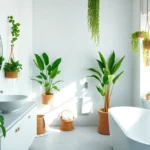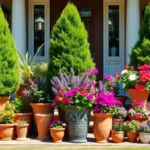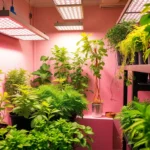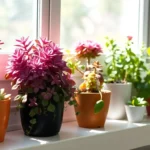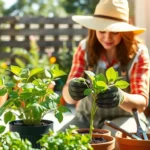We’ve all walked into a room and felt something was missing – that spark of life and vibrancy that transforms a space from ordinary to extraordinary. Small indoor plants offer the perfect solution to breathe fresh energy into any corner of your home without overwhelming your décor or budget.
These compact green companions don’t just look stunning – they’re powerhouse decorators that purify your air while adding texture color and natural beauty to every room. From tiny succulents perched on windowsills to cascading pothos trailing from floating shelves we’re discovering that small plants pack an incredible design punch.
Whether you’re working with limited space tight budgets or simply want to start small with your indoor garden journey miniature houseplants prove that good things truly come in small packages. They’re forgiving for beginners yet sophisticated enough to complement any interior style from modern minimalist to cozy bohemian.
Choose the Right Small Plants for Your Indoor Space
Selecting the perfect small plants for your home requires careful consideration of your exact environment and lifestyle. We’ll guide you through the essential factors that determine which miniature houseplants will thrive in your space.
Consider Light Requirements and Room Conditions
Assess your available natural light before purchasing any small indoor plants. South facing windows provide the brightest light, making them ideal for succulents like jade plants and echeveria. East and west facing windows offer moderate light that suits pothos, snake plants, and small ferns perfectly.
Measure your room’s humidity levels to ensure plant compatibility with your space. Bathrooms and kitchens naturally maintain higher humidity, creating perfect conditions for small tropical plants like baby spider plants and mini peace lilies. Living rooms and bedrooms typically have lower humidity, making them suitable for drought tolerant varieties such as small cacti and aloe vera.
Check temperature consistency throughout your chosen plant locations. Most small indoor plants prefer temperatures between 65-75°F during the day and slightly cooler at night. Avoid placing plants near heating vents, air conditioning units, or drafty windows that create temperature fluctuations.
Select Low-Maintenance Varieties for Beginners
Start with resilient succulent varieties that forgive occasional neglect. Haworthia, small jade plants, and echeveria require watering only once every 2-3 weeks and adapt well to various light conditions. These hardy plants store water in their leaves, making them perfect for busy schedules.
Choose forgiving foliage plants that indicate their needs clearly. Pothos develops yellow leaves when overwatered and droopy leaves when thirsty. Snake plants show similar clear signals and can survive in low light conditions for weeks without attention.
Consider air purifying varieties that offer dual benefits for your indoor decoration. Small spider plants, snake plants, and pothos actively remove toxins from indoor air while requiring minimal care. These plants propagate easily, allowing you to expand your collection or share with friends.
Match Plant Size to Available Space
Evaluate your surface dimensions before selecting container sizes. Desk spaces accommodate plants in 2-4 inch pots, while shelves can handle slightly larger 4-6 inch containers. Windowsills typically support multiple small plants in 2-3 inch pots arranged in attractive groupings.
Plan for growth patterns when positioning your small indoor plants. Trailing varieties like pothos and string of pearls need space to cascade, making them perfect for high shelves or hanging planters. Upright growers such as small snake plants and ZZ plants work well in corner spots or as desk companions.
Calculate vertical clearance for plants that grow upward rather than outward. Small palms, dracaenas, and rubber tree saplings may start tiny but can reach 2-3 feet in height within a year. Position these varieties where they won’t interfere with overhead lighting or ceiling fans as they mature.
Create Stunning Window Sill Displays

Window sills offer the perfect stage for showcasing our collection of small indoor plants. These naturally lit spaces provide an ideal foundation for creating eye-catching plant arrangements that enhance our home’s aesthetic appeal.
Arrange Plants by Height and Texture
Visual interest emerges when we thoughtfully combine plants of varying heights and textures on our window sills. Taller specimens like spider plants work beautifully positioned at the back or corners of our display, while smaller trailing varieties like string of pearls create ever-changing front-row appeal. Contrasting leaf shapes and foliage types adds remarkable dimension to our arrangements.
Succulents paired with delicate ferns create rich textural compositions that draw the eye naturally across our display. Long, graceful leaves of spider plants provide stunning contrast against the round, bead-like structure of string of pearls plants. Layering different plant types together produces sophisticated visual depth that transforms ordinary window sills into captivating garden showcases.
Use Decorative Saucers and Plant Stands
Elevation transforms our window sill displays from simple plant collections into stunning decorative features. Plant stands ranging from simple wooden dollies to elegant multi-tier shelves allow better light exposure while making pot movement effortless for maintenance. These practical accessories create vertical layers that maximize our limited window space.
Decorative saucers serve dual purposes by catching water spills and adding color or pattern beneath our pots. Pretty saucers enhance our displays without sacrificing practicality, protecting window sills while contributing to our overall design aesthetic. Multi-level stands showcase multiple plants effectively, creating gallery-like presentations that highlight each specimen’s unique characteristics.
Maximize Natural Light Exposure
Strategic positioning ensures our small indoor plants receive optimal light conditions for healthy growth and vibrant foliage. East or west-facing window sills provide ideal bright, indirect sunlight that most small houseplants crave without the harsh intensity of midday sun. Reflected light from nearby surfaces can supplement natural illumination in areas with limited direct exposure.
Plants positioned too close to windows may suffer from scorching, while those placed too far away often develop leggy growth patterns. We can supplement inadequate natural light with artificial grow lights to maintain plant health during darker months. Rotating our displays periodically ensures even light distribution, preventing plants from leaning toward their light source and maintaining balanced growth patterns.
Design Eye-Catching Plant Shelves and Ledges
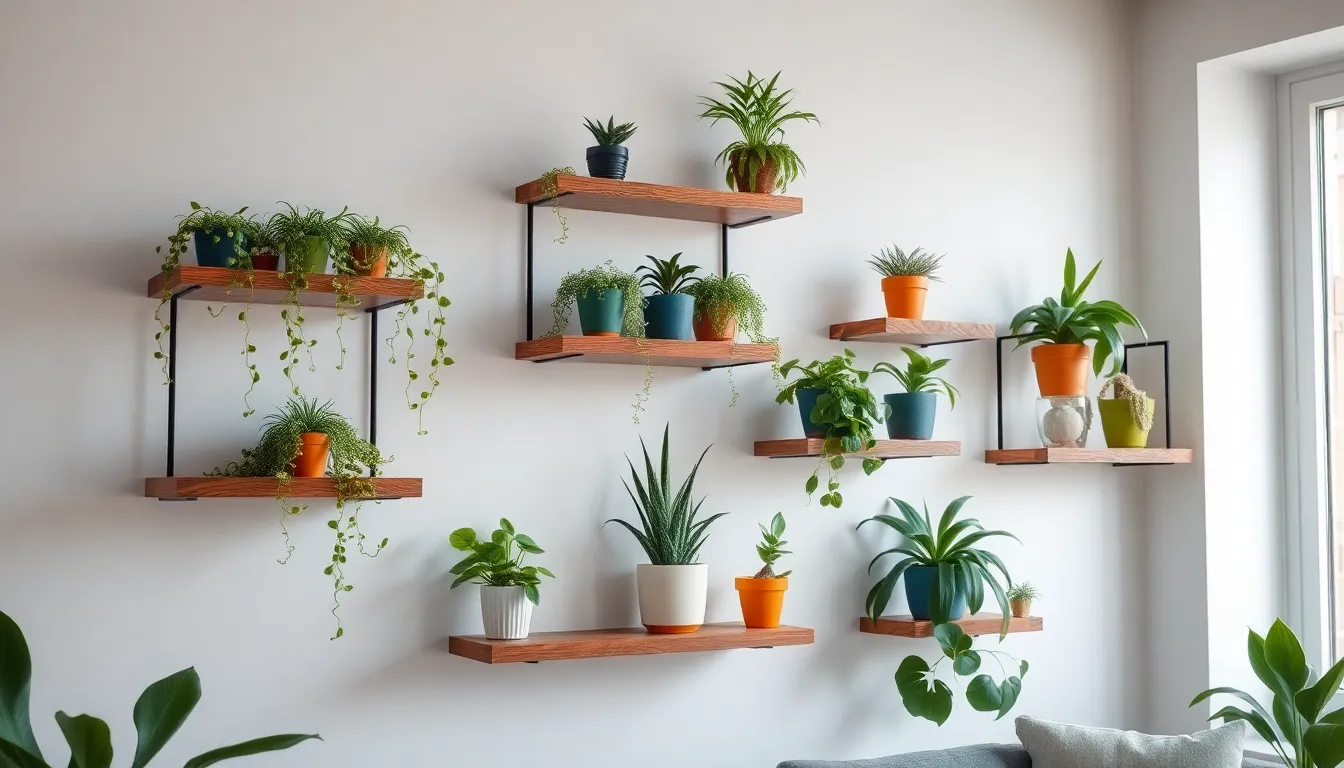
Plant shelves and ledges transform ordinary walls into stunning vertical gardens that maximize your small indoor plant displays. Varying heights and sizes create ever-changing visual interest while offering personalized arrangements that suit any space.
Install Floating Shelves for Vertical Gardens
Floating shelves maximize floor space while creating sophisticated vertical plant displays that work perfectly in compact areas. Installing multiple shelves at different heights allows you to stack small plants vertically and add greenery without sacrificing valuable square footage.
Grouping plants by their care requirements becomes easier when you use floating shelves since you can dedicate exact levels to plants with similar light and watering needs. Wall-mounted arrangements offer clean platforms that showcase your small indoor plants while keeping them organized and accessible for maintenance.
Vertical garden systems using floating shelves work particularly well in apartments or small homes where horizontal space is limited. These installations create the illusion of larger spaces while bringing nature indoors through strategic plant placement at eye level and above.
Mix Trailing and Upright Plant Varieties
Combining trailing and upright plants creates texture contrast that makes your shelf displays visually compelling and ever-changing. String of pearls and spider plants cascade beautifully from high shelves while upright varieties like aloe vera and anthurium fill tabletops and lower levels effectively.
Trailing plants work best when placed on upper shelves where their foliage can flow downward naturally, creating movement and softness in your display. Spider plants with their long, slender leaves create visual interest when positioned above eye level on floating shelves.
Upright plant varieties anchor your arrangements and provide structure between the flowing elements of trailing species. Aloe vera and anthurium add vertical lines and bright colors that complement the cascading textures of plants like string of pearls.
Incorporate Decorative Planters and Containers
Decorative containers enhance the aesthetic appeal of your small indoor plants while complementing your room’s existing design theme. Terrariums work perfectly for air plants since they provide the ventilation these soil-free plants require while creating attractive focal points.
Stylish ceramic pots showcase succulents beautifully and offer the drainage these plants need to thrive on your shelves and ledges. Colorful containers for flowering plants like anthuriums can tie into your room’s color scheme while providing proper growing conditions.
Container selection impacts both plant health and visual appeal, so choose pots with appropriate drainage for soil-based plants or adequate ventilation for air plants. Matching your planter materials and colors to your shelf finishes creates cohesive displays that feel intentional and professionally designed.
Transform Your Desk Space with Mini Gardens
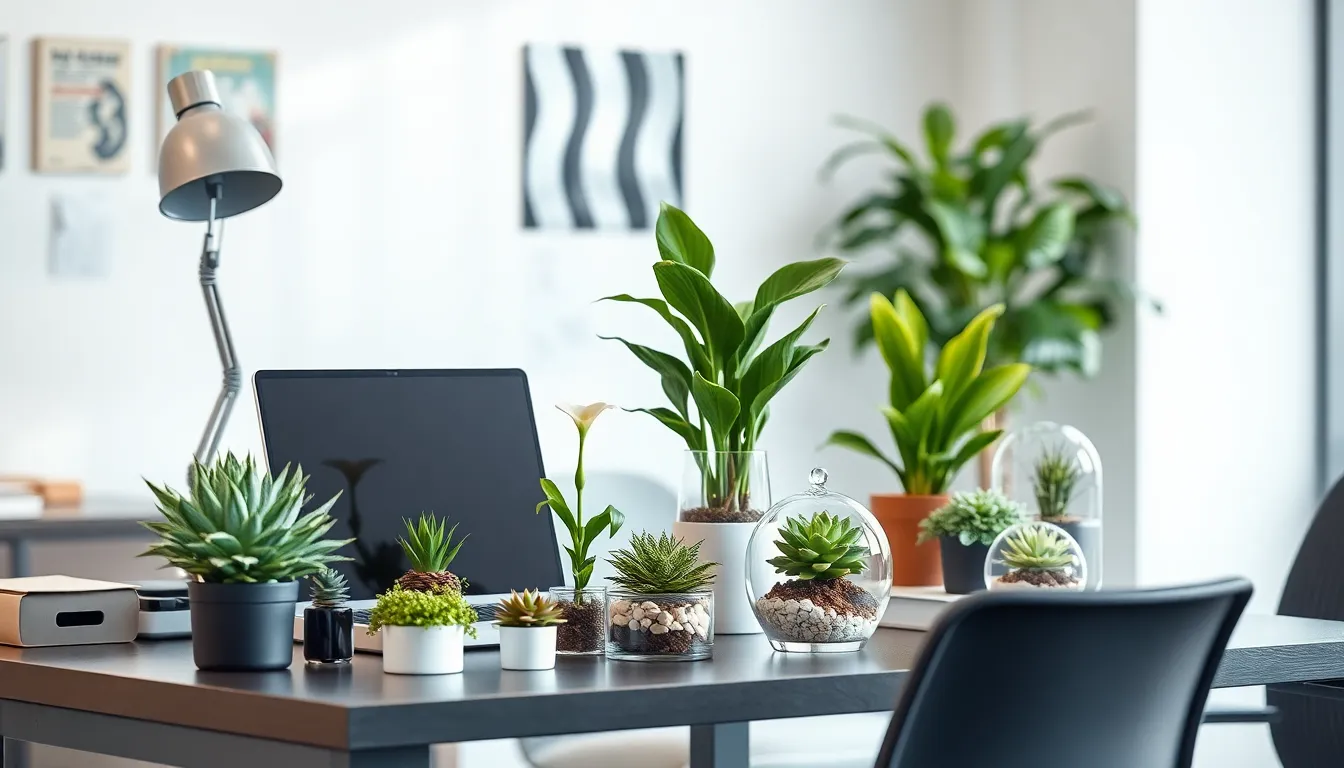
Creating a miniature oasis on your desk brings nature indoors while maximizing limited workspace real estate. We’ll show you how to build stunning mini gardens that boost productivity and enhance your office environment.
Select Compact Plants Perfect for Workspaces
Succulents top our list of ideal workspace companions due to their minimal care requirements and compact size. Spider plants (Chlorophytum comosum) excel in office environments by filtering harmful pollutants like benzene and formaldehyde from the air. Peace lilies (Spathiphyllum) thrive in low-light conditions typical of many workspaces while purifying your breathing environment.
Bonsai trees offer sophisticated elegance without demanding extensive maintenance schedules. These miniature masterpieces fit perfectly on desks and shelves while providing visual interest throughout busy workdays. Studies show that these air-purifying varieties can improve office air quality by up to 25%, increasing oxygen levels and removing harmful chemicals.
Air plants require no soil and minimal watering, making them perfect for busy professionals who travel frequently. Pothos varieties trail beautifully from desk edges while tolerating various lighting conditions. Small snake plants withstand neglect while continuing to clean toxins from your workspace atmosphere.
Use Small Terrariums and Glass Containers
Glass terrariums create stunning microenvironments that protect plants while serving as conversation starters. We recommend clear glass containers that allow natural light to reach your plants while showcasing their beauty from every angle. These enclosed systems maintain optimal humidity levels for tropical varieties like ferns and mosses.
Mason jars transform into charming planters for herbs like basil and mint that you can snip for afternoon tea. Geometric glass containers add modern sophistication to contemporary office designs while housing succulents and air plants. Hanging glass orbs use vertical space effectively without cluttering your desk surface.
Apothecary jars with wide openings accommodate larger plants like small peace lilies while maintaining easy access for maintenance. Clear cylinders work perfectly for layered displays featuring colored sand, pebbles, and activated charcoal. These transparent vessels showcase root systems and soil layers, creating educational displays that spark curiosity.
Position Plants to Reduce Eye Strain
Strategic placement within your direct line of sight allows your eyes to rest on natural elements rather than screens continuously. We position greenery at eye level or slightly below to encourage natural breaks from digital displays throughout the workday. This simple adjustment helps mitigate digital eye strain while boosting relaxation.
Corner positioning utilizes often-overlooked spaces while keeping plants visible during screen breaks. Placing trailing varieties like pothos at monitor height creates natural movement that draws eyes away from static displays. Desktop arrangements should complement your workflow rather than obstruct important documents or equipment.
Distance considerations matter when creating eye-relief stations around your workspace. Plants positioned 18-24 inches from your primary work area provide optimal viewing distance for relaxation breaks. We recommend clustering several small plants together to create more substantial visual impact than single specimens scattered randomly across surfaces.
Enhance Bathroom Ambiance with Humidity-Loving Plants
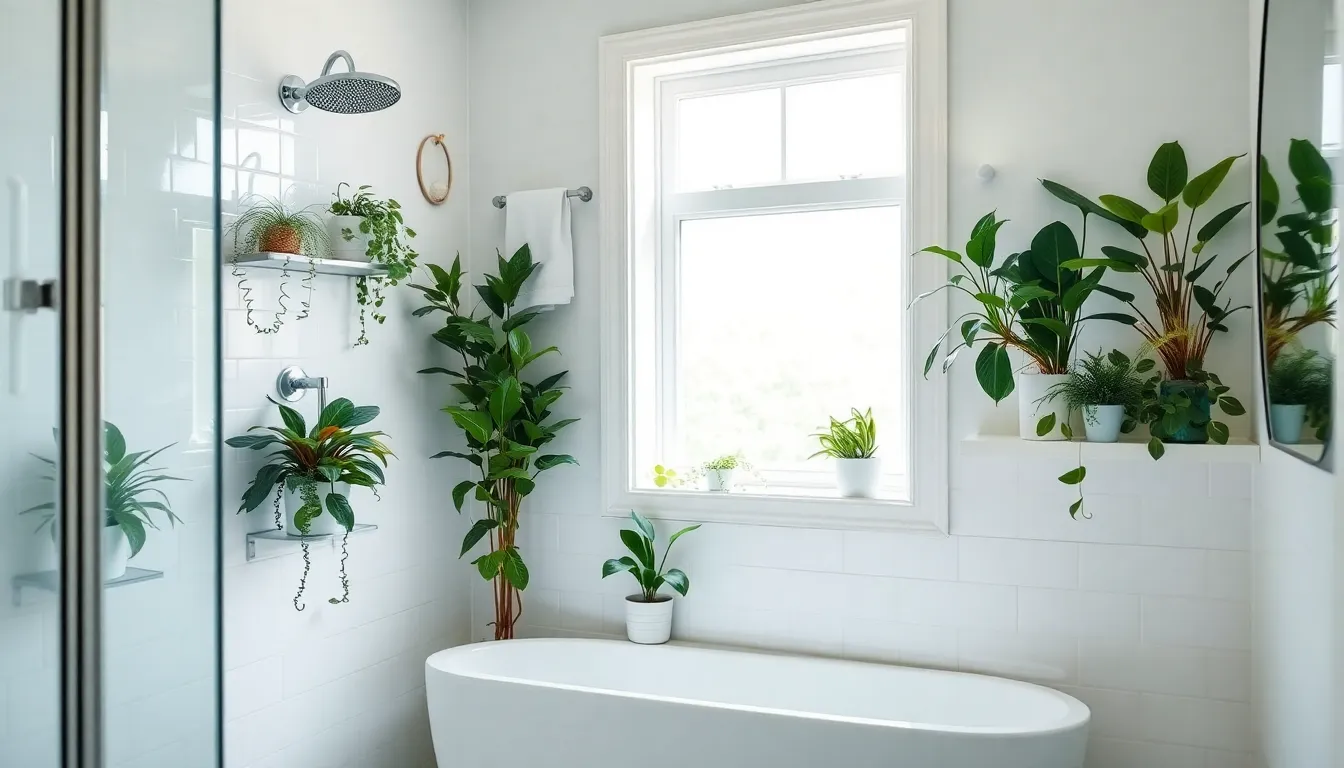
Bathrooms present unique opportunities for small plant displays since their naturally humid environments create perfect conditions for moisture-loving varieties. We can transform these often-overlooked spaces into lush retreats by selecting plants that actually benefit from the steamy conditions bathrooms naturally provide.
Choose Plants That Thrive in Steamy Conditions
Ferns flourish in bathroom humidity while requiring minimal light, making them ideal hanging plants that save precious counter space. Spider plants demonstrate remarkable tolerance for humid conditions and indirect sunlight, producing trailing “spiderettes” that create ever-changing visual interest as they cascade from elevated positions.
Peace lilies prefer low light environments combined with high humidity levels, naturally purifying the air while producing elegant white blooms that complement bathroom aesthetics. Snake plants (Sansevieria) excel in humid, low light conditions with virtually no maintenance requirements, offering various sizes perfect for compact bathroom corners.
Weeping figs add sophisticated elegance to larger bathroom spaces, thriving with bright indirect light and consistent humidity from daily shower use. We’ve found these plants particularly effective at creating focal points in bathrooms with adequate floor space.
Use Shower Shelves and Window Ledges
Shower shelves maximize vertical space while positioning plants directly in humid zones where they receive optimal moisture from steam. Window ledges provide ideal platforms for small plant collections, offering indirect light exposure without overwhelming limited counter areas.
Hanging planters eliminate surface clutter while creating eye-catching displays that draw attention upward, making bathrooms appear larger and more spacious. We recommend securing these installations properly to handle bathroom humidity without compromising safety or plant health.
Create Spa-Like Atmosphere with Greenery
Strategically placed greenery transforms ordinary bathrooms into calming retreats that promote relaxation during daily routines. The combination of natural humidity and carefully selected plants creates sensory experiences that rival professional spa environments.
Small plants soften hard bathroom surfaces while introducing organic shapes that contrast beautifully with typical bathroom fixtures and tiles. We’ve observed that this natural element integration significantly enhances the overall ambiance, making bathrooms feel more welcoming and therapeutic.
Style Your Coffee Table with Plant Centerpieces
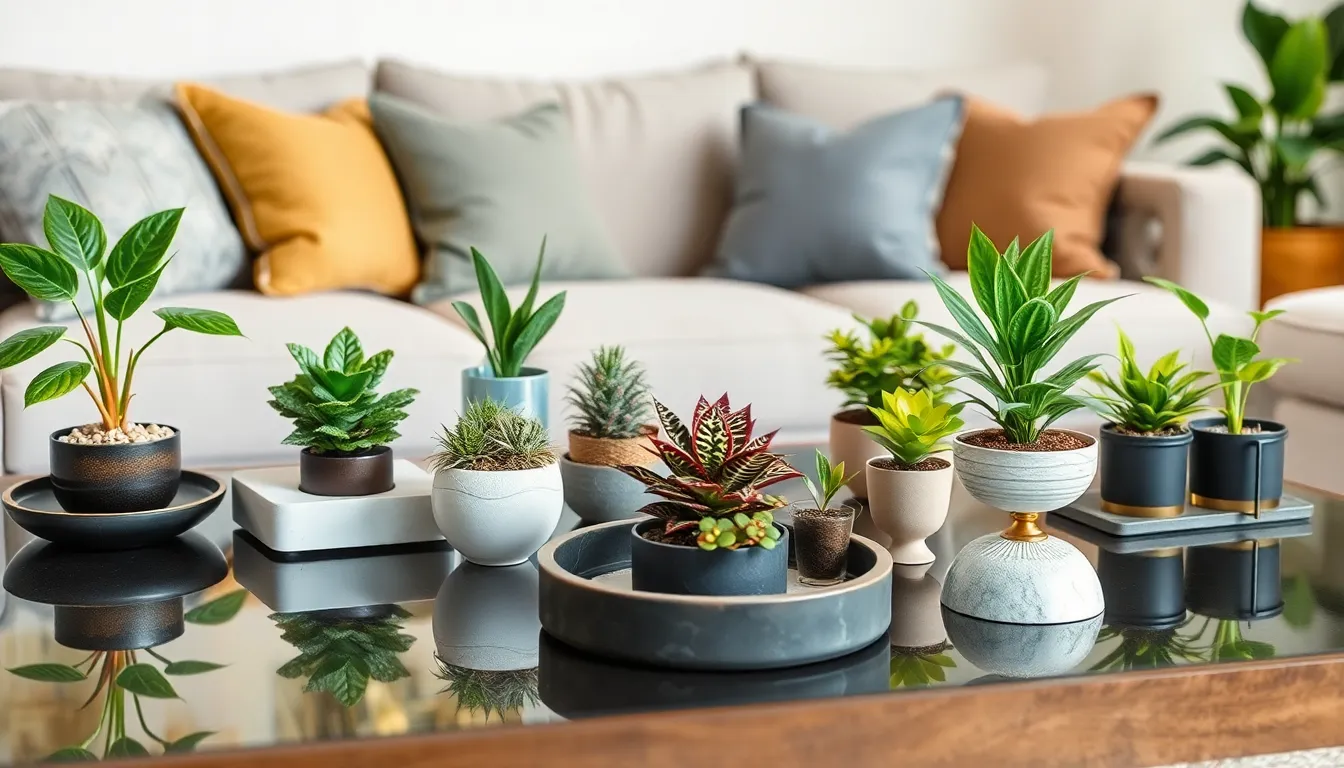
Coffee tables provide the perfect stage for showcasing small plants as living centerpieces that bring natural beauty into your living space. These focal points create conversation starters while adding vibrant greenery without overwhelming your seating area.
Arrange Multiple Small Plants in Groupings
Grouping small plants together creates visual interest and makes a stronger decorative statement. We recommend combining different plant types such as aloe vera, anthurium, and spider plants to achieve variety in shape, color, and texture. These combinations work exceptionally well because they offer contrasting foliage patterns that catch the eye from multiple angles.
Mixing soil-based and soil-free plants adds another layer of visual intrigue. Air plants complement traditional potted varieties beautifully since they require no soil and can be displayed in unique containers. We suggest placing three to five plants in odd-numbered groupings, as this arrangement feels more natural and balanced to the human eye.
Strategic placement enhances the overall impact of your plant groupings. Position taller plants toward the back of your coffee table arrangement, with shorter varieties cascading forward. This layered approach ensures every plant remains visible while creating depth and dimension in your centerpiece display.
Use Decorative Trays and Stands
Decorative trays help organize small pots into tidy arrangements while making plant care easier. We find that moving grouped plants becomes effortless when they’re contained on a single tray, whether for cleaning or rearranging your space. Wooden trays complement rustic decor styles, while metallic options suit modern or industrial themes.
Plant stands with different heights allow for layering and prevent flat displays. Elevated platforms create visual depth by positioning some plants higher than others, mimicking natural growing patterns. We recommend using stands of varying materials like bamboo, ceramic, or wrought iron to match your existing decor.
Furniture pieces like bookcases and side tables provide additional display opportunities. These surfaces create captivating multi-level arrangements that personalize your space with strategic greenery placement. We suggest using the coffee table as your primary display area while incorporating nearby furniture to extend the plant arrangement throughout your seating area.
Balance Plant Heights and Textures
Mixing plants with diverse heights and leaf textures maintains balanced and ever-changing decor. Tall, slender plants like asparagus fern provide vertical interest while complementing shorter, fuller varieties like baby toes or string of pearls. This height variation prevents monotony and creates a more sophisticated appearance.
Textural contrasts enrich your centerpiece’s aesthetic appeal significantly. We recommend pairing smooth-leafed plants with those featuring interesting textures like fuzzy leaves, waxy surfaces, or distinctive patterns. These combinations ensure your coffee table arrangement remains visually captivating from every angle.
Balanced arrangements consider both visual weight and growing requirements. Plants with similar care needs should be grouped together for easier maintenance, while their visual arrangement should distribute colors and textures evenly across your coffee table surface. We find that this approach creates harmony between practical plant care and stunning visual impact.
Brighten Dark Corners with Shade-Tolerant Varieties
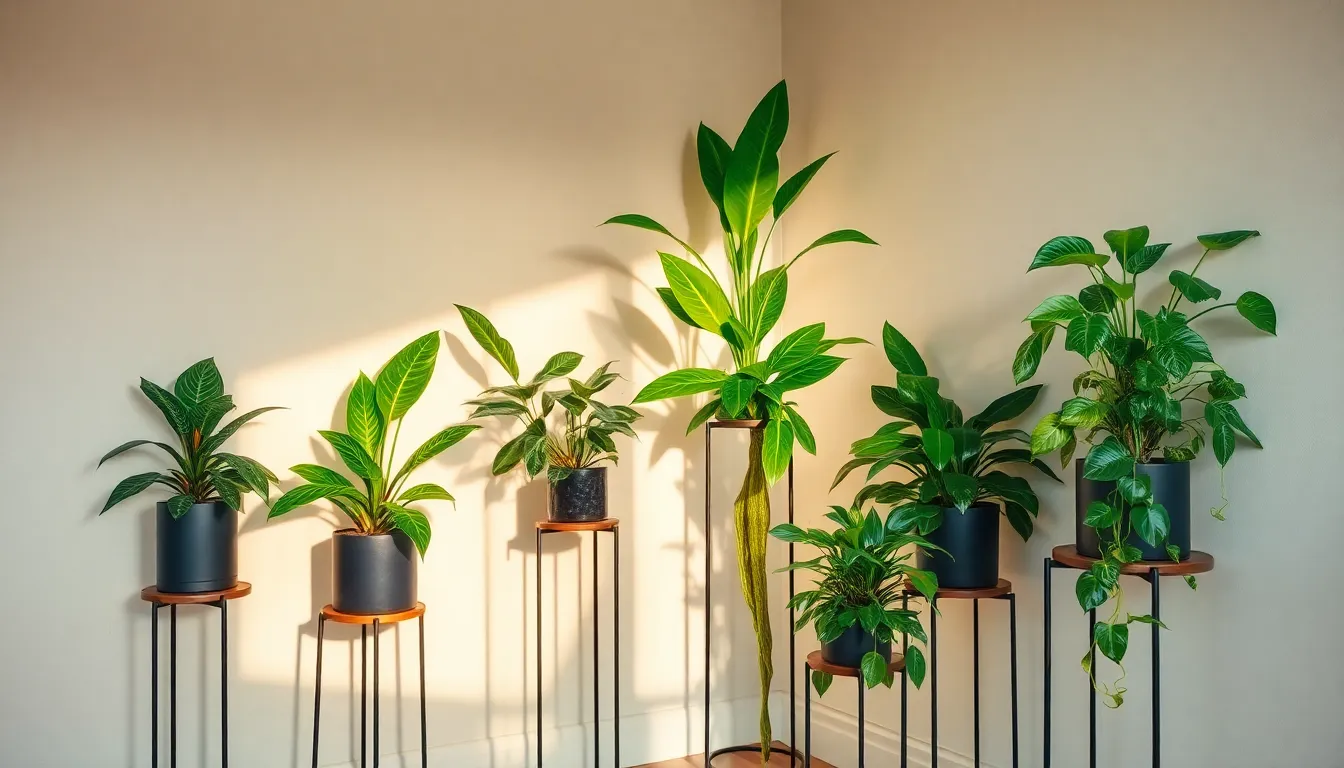
Dark corners and dimly lit spaces don’t have to remain barren when we choose the right shade-tolerant plants that thrive in low light conditions.
Select Plants That Flourish in Low Light
ZZ plants (Zamioculcas zamiifolia) top our list for dark corner decoration because they survive in full shade while preferring bright, indirect light. We only need to water them when the soil becomes completely dry, making maintenance incredibly simple.
Snake plants from the Dracaena species add sculptural height to dark interiors while thriving in low light conditions. These plants naturally adapt to shady environments and maintain their striking appearance where other varieties might struggle.
Golden pothos (Epipremnum aureum) creates visual interest with trailing vines that grow beautifully in low light settings. We love how these plants cascade from elevated positions, adding movement and greenery to previously unused corners.
Spider plants (Chlorophytum comosum) tolerate partial shade exceptionally well and produce “baby” plants for easy propagation. Their resilient nature makes them perfect for beginners who want reliable growth in challenging lighting conditions.
Philodendrons and Aspidistra round out our top recommendations for low light spaces, requiring minimal care while delivering maximum decorative impact.
Use Plant Stands to Add Height and Interest
Elevating plants with stands maximizes their decorative impact by creating visual layers and making better use of vertical space in darker areas. We position tall Dracaenas on stands to serve as focal points against shadowed walls, instantly transforming neglected corners into attractive features.
Combining different heights creates dimension that draws attention to greenery even in dimly lit spaces. We place smaller varieties like Lemon Button Ferns or Philodendron Micans on lower shelves to complement taller specimens above.
Strategic placement on plant stands allows us to position shade-tolerant varieties at optimal viewing angles while maximizing their decorative potential. This layered approach transforms ordinary dark corners into sophisticated plant displays that enhance the entire room’s ambiance.
Incorporate Grow Lights When Necessary
LED grow lights provide the right spectrum for photosynthesis when natural light proves insufficient for maintaining plant health. We use supplemental lighting especially in deep corners or rooms without windows to ensure our shade-tolerant plants maintain vibrant foliage.
Targeted lighting answers help plants like ZZ plants, snake plants, and pothos thrive even though minimal daylight exposure. These grow lights allow us to place plants in virtually any corner while supporting healthy growth and maintaining the lush appearance that makes indoor decoration so appealing.
Combining grow lights with plant stands creates the perfect environment for shade-tolerant varieties to flourish in previously unusable spaces. We find this approach particularly effective for maintaining plant vitality while achieving the decorative impact we want in challenging lighting conditions.
Maximize Small Spaces with Hanging Plant Solutions
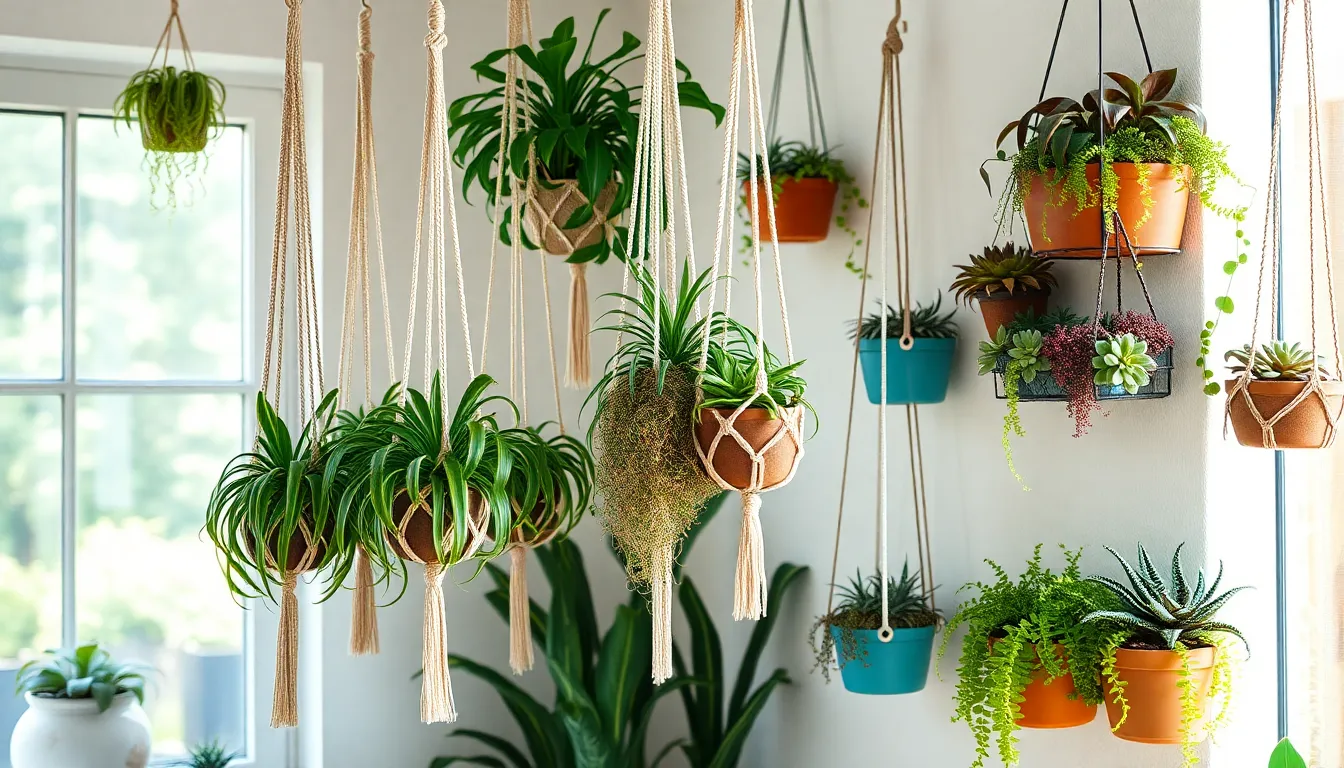
Hanging plants offer the perfect solution when floor space is limited but you still want to add greenery to your home. These vertical growing options create stunning displays while keeping surfaces clear for daily activities.
Install Ceiling Hooks for Macrame Planters
Ceiling hooks paired with macrame hangers transform empty overhead space into beautiful plant displays. We recommend choosing sturdy hooks that can support the weight of both plant and water, ensuring safety while creating eye-catching vertical gardens.
Spider plants work exceptionally well in macrame planters because their trailing foliage creates natural cascading effects. String of pearls also thrives in these hanging displays, with their pearl-like succulent leaves draping elegantly from elevated positions.
Macrame planters add texture and bohemian charm to any room while maximizing your growing space. Position these hanging gardens near windows where plants can receive adequate light without blocking pathways or occupying valuable floor real estate.
Use Wall-Mounted Planters and Brackets
Wall-mounted planters free up horizontal surfaces while creating dramatic vertical displays throughout your home. These space-saving answers work particularly well in narrow hallways, small kitchens, or tight corners where floor plants wouldn’t fit.
Succulents excel in wall-mounted arrangements because their compact size and minimal root systems make them ideal for mounted containers. Air plants also thrive in these displays since they require no soil, making wall installation clean and simple.
Small ferns bring lush greenery to wall-mounted planters, especially in bathrooms or other humid areas where they naturally flourish. We suggest grouping different plant types at varying heights to create visual interest and maximize your wall’s decorative potential.
Brackets offer versatility by allowing you to adjust plant positions based on light requirements and seasonal changes. This flexibility ensures your wall-mounted garden remains healthy and visually appealing year-round.
Create Cascading Green Walls
Cascading green walls combine multiple hanging and wall-mounted planters to create stunning living art installations. These vertical gardens maximize growing space while serving as striking natural décor pieces that transform ordinary walls into green focal points.
Vining plants like pothos or philodendron work perfectly for cascading displays because their trailing growth naturally flows downward. Trailing succulents such as string of hearts or burro’s tail also create beautiful cascading effects with their unique textures and colors.
Layer different plant heights and varieties to achieve depth and visual complexity in your green wall design. We recommend mixing upright plants with trailing varieties to create natural-looking cascades that mimic how plants grow in their native environments.
Strategic placement of cascading planters can divide large rooms, create privacy screens, or transform blank walls into living masterpieces. These installations not only save floor space but also improve air quality while adding natural beauty to your indoor environment.
Coordinate Planters with Your Interior Design Style
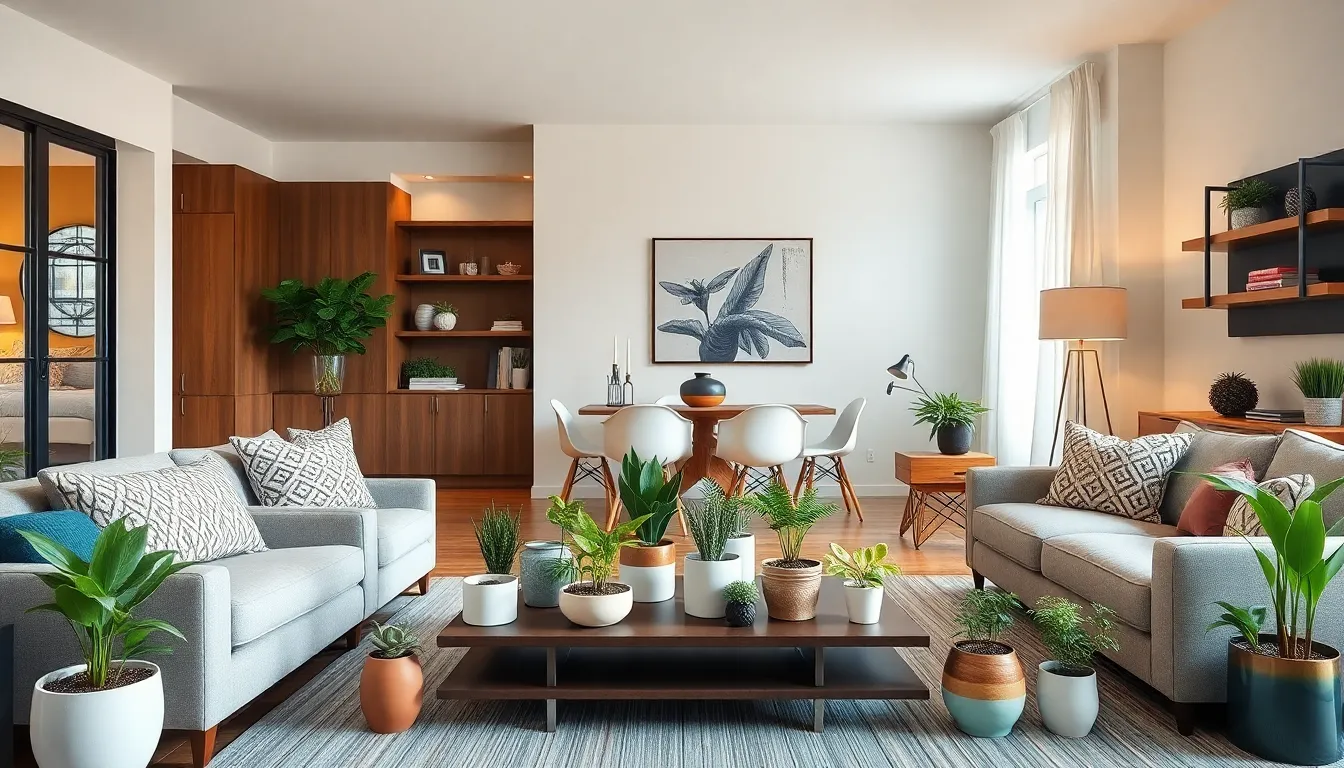
Selecting the right planters transforms your small indoor plants from simple greenery into intentional design elements that enhance your living space. We can elevate our plant displays by carefully coordinating containers with our existing decor to create a polished, cohesive look.
Match Pot Colors to Your Existing Decor
Neutral colors like white, beige, and gray serve as versatile foundation choices that work seamlessly in most interior settings. These timeless shades allow our plants to take center stage while maintaining visual harmony with existing furnishings and wall colors.
Vibrant pot colors create stunning focal points when we want our plants to make a bold statement. For example, pairing bright red or pink pots with colorful anthuriums amplifies their natural beauty while adding energetic pops of color to neutral rooms.
Harmonizing pot colors with our room’s existing palette creates a sophisticated, pulled together appearance. We can choose containers that either complement similar tones or provide strategic contrast to highlight exact plants as decorative features.
Choose Materials That Complement Your Furniture
Wooden pots and bamboo planters beautifully echo natural wood furniture finishes, creating seamless integration between our plant containers and existing pieces. This coordination helps tie plant decor into our room’s overall aesthetic while maintaining textural consistency.
Metallic and glass containers pair exceptionally well with modern or industrial furniture styles. These sleek materials reflect contemporary design elements while adding sophisticated shine that complements metal fixtures and glass surfaces.
Woven baskets and clay pots enhance rustic or boho interior styles with their organic textures and earthy appeal. We can use these natural materials to reinforce existing design themes while adding visual warmth and tactile interest.
Create Cohesive Color Schemes Throughout
Earth tone interiors benefit from plants with green or variegated foliage paired with matching neutral containers. This approach creates flowing color continuity that feels intentional and professionally designed throughout our living spaces.
Succulents and air plants in neutral or pastel pots enhance soft, calming ambiances perfect for bedrooms and relaxation areas. These gentle color combinations promote tranquility while maintaining visual interest through varied plant textures and forms.
Colorful foliage plants can be accentuated with equally vibrant containers to maintain design harmony while celebrating bold botanical beauty. We achieve balance by ensuring our pot colors complement rather than compete with our plants’ natural hues.
Maintain Your Small Indoor Plant Collection
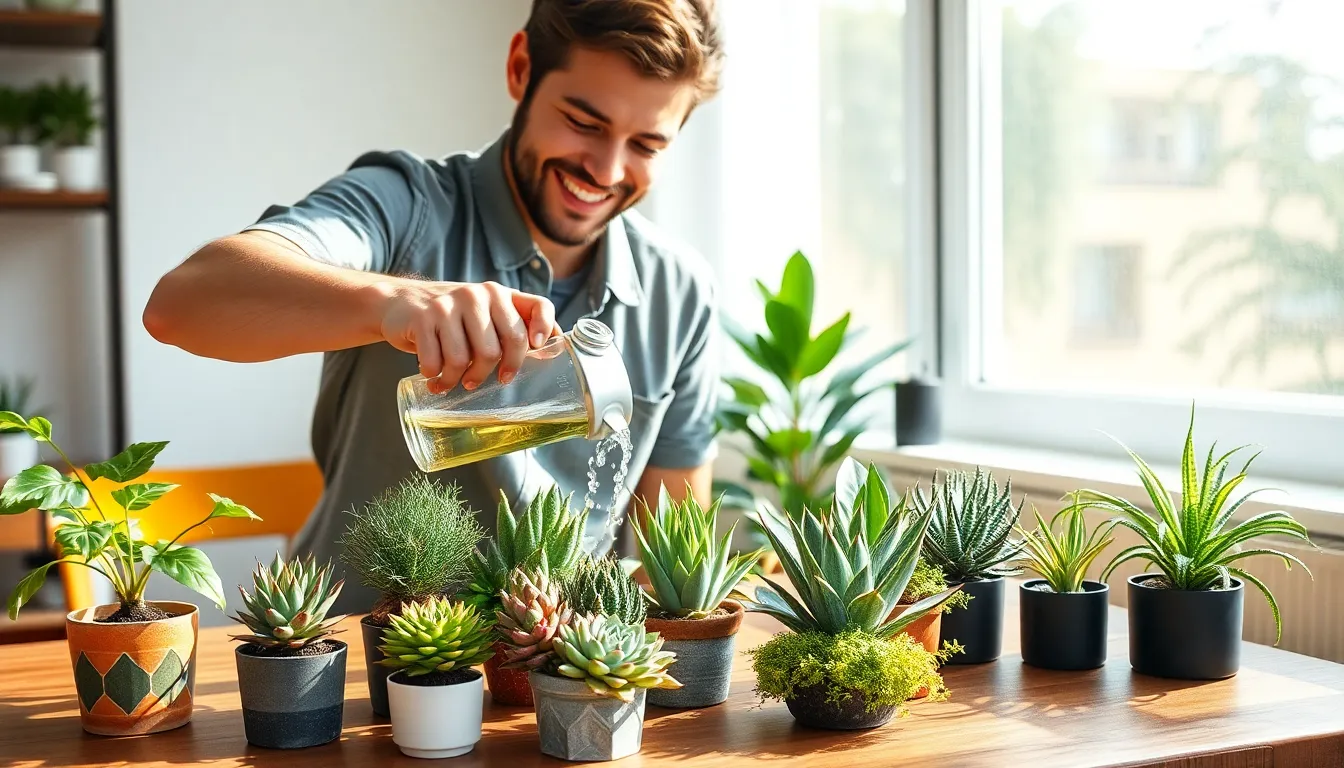
Now that we’ve created beautiful displays throughout our homes, we need to keep our small indoor plants thriving with proper care and maintenance routines.
Establish Regular Watering and Care Routines
Each plant type has exact watering needs that we must understand and follow consistently. Succulents like aloe vera prefer soil completely dry between waterings, while tropical plants may need consistent moisture levels. We should establish a watering schedule based on plant species and monitor soil moisture accordingly to avoid over or under watering issues.
Test soil moisture by inserting our finger about an inch deep into the potting mix. Different plants signal their watering needs in unique ways, making observation crucial for success. Air plants require misting rather than traditional watering since they don’t need soil for growth.
Create a weekly care checklist that includes watering, fertilizing, and general maintenance tasks. Small plants respond quickly to changes in care routines, making consistency our most valuable tool. Document our watering schedule to track patterns and adjust based on seasonal changes or plant responses.
Monitor Plant Health and Growth Patterns
Regularly check our plants for signs of stress, pests, or diseases that can quickly impact small specimens. Small plants show changes rapidly, allowing us to intervene before problems become serious. Look for yellowing leaves, unusual spots, or changes in growth patterns that indicate care adjustments are needed.
Observe growth patterns to determine when repotting, pruning, or light adjustments become necessary. Plants that lean toward light sources need repositioning, while those outgrowing their containers require larger homes. Early detection of issues saves time and prevents plant loss in our carefully curated collections.
Watch for pest activity like spider mites, aphids, or scale insects that target indoor plants. Small plant collections are easier to inspect thoroughly, giving us an advantage in pest management. Address problems immediately with appropriate treatments to prevent spreading throughout our displays.
Rotate Plants for Even Light Distribution
Rotate our plants periodically so all sides receive equal light exposure and prevent leaning growth patterns. Plants naturally grow toward their light source, creating uneven development if left in fixed positions. This simple practice promotes symmetrical growth and maintains the aesthetic appeal of our displays.
Turn each plant a quarter rotation weekly to ensure balanced development on all sides. Plants placed near windows especially benefit from regular rotation since light comes primarily from one direction. Consistent rotation prevents the need for corrective measures later in the plant’s development.
Place larger plants lower and smaller plants higher to enhance visual appeal and maximize light access for all specimens. This arrangement ensures that taller plants don’t shade smaller ones while creating ever-changing visual layers. Strategic positioning combined with regular rotation maintains healthy growth patterns throughout our collection.
Conclusion
Small indoor plants offer us endless possibilities to transform our living spaces into vibrant green sanctuaries. We’ve explored how these compact companions can enhance every corner of our homes while requiring minimal investment and care.
The beauty of small plant decoration lies in its versatility and accessibility. Whether we’re styling a bathroom shelf creating a desktop oasis or brightening a forgotten corner we can achieve stunning results with thoughtful placement and creative displays.
By choosing the right plants for our exact conditions and establishing consistent care routines we’re setting ourselves up for long-term success. Our small indoor gardens will continue to flourish and bring joy to our daily lives for years to come.
Frequently Asked Questions
What are the main benefits of having small indoor plants?
Small indoor plants offer dual benefits: they enhance your home’s aesthetic appeal by adding vibrancy and energy to any space, while also providing functional advantages like air purification. They’re perfect for those with limited space or budgets, making them accessible to both beginners and experienced plant enthusiasts. These compact plants can complement various interior styles without overwhelming your decor.
How do I choose the right small plants for my indoor space?
Consider three key factors when selecting small indoor plants: light requirements, humidity levels, and temperature consistency. For beginners, opt for low-maintenance varieties like succulents and forgiving foliage plants that clearly indicate their care needs. Match plant size to your available space, considering growth patterns and vertical clearance to ensure plants thrive in their designated locations.
Where are the best places to display small indoor plants?
Window sills are ideal showcases due to natural light availability. Other excellent locations include desk spaces for mini gardens, bathroom shelves and ledges (which benefit from humidity), coffee tables as living centerpieces, and dark corners using shade-tolerant varieties. Plant shelves and floating ledges can transform walls into vertical gardens, maximizing floor space.
What plants work best for low-light areas?
For dimly lit spaces, choose shade-tolerant plants like ZZ plants, snake plants, golden pothos, and spider plants. These varieties thrive in low-light conditions and maintain their vibrant appearance. Consider incorporating LED grow lights to support plant health in areas with insufficient natural light, and use plant stands to create visual layers.
How should I arrange small plants for visual appeal?
Create visual interest by arranging plants by height and texture, placing taller plants at the back and smaller trailing varieties in front. Group multiple small plants together, mixing different types for variety in shape, color, and texture. Use decorative saucers, plant stands, and trays to enhance displays while maximizing light exposure and maintaining organization.
What plants are suitable for bathroom environments?
Bathrooms’ naturally humid environments are perfect for humidity-loving plants like ferns, spider plants, peace lilies, snake plants, and weeping figs. These plants thrive in steamy conditions and can transform your bathroom into a spa-like retreat. Use shower shelves and window ledges to maximize vertical space while creating eye-catching displays.
How do I maintain my small indoor plant collection?
Establish regular watering schedules tailored to each plant’s specific needs and monitor soil moisture consistently. Create a weekly care checklist that includes observing plant health for signs of stress or pests, rotating plants for even light distribution, and strategic positioning to enhance visual appeal while maximizing light access.
What containers work best for small indoor plants?
Choose decorative planters and containers that enhance aesthetic appeal while ensuring proper growing conditions. Small terrariums and glass containers create visually appealing microenvironments, especially for desk spaces. Use decorative trays and stands to organize arrangements, and ensure containers have proper drainage to maintain plant health.


